
The last month I have had the privilege to attend three conferences – IFHE in Bologna (the 7th European Congress for the International Federation of Hospital Engineering), European Healthcare Design in London and this week ICBEN in Zürich. And what a way to end it! ICBEN was amazing – great program, great speakers wanting to share their knowledge and so much inspiration in general.
I have put together a top 3 of my own ‘favorite highlight key conference points’ – with respect for all the presentations I missed because I was in another session.
1. Women complain! And introverts suffer the most…
We all know about it. Women complain more about noise… Are women just more sensitive or vulnerable – and don’t they cope with sound and noise as well as men? An interesting presentation by Eberhard Greiser discussed what could be an interesting topic during dinner in many families – the fact (?) that women are sensitive to sound.
School teachers and nurses e.g. are always on the list on working groups that complain the most about noise according to the Danish National Research Centre for the Working Environment – and these groups normally consist of women.
Eberhard Greiser showed a more serious side of this during his presentation under the title: ‘Nigh time aircraft noise and vascular diseases’. It is well known that traffic noise in general causes sleep disruption –that can lead to risk factors – that can lead to diseases – W. Babisch has earlier been communicating this all over the world – but in this presentation we learned that there are also differences in the way men and women are affected – and the data talks for itself: women complain for a reason – they are more likely to get sick because of noise.
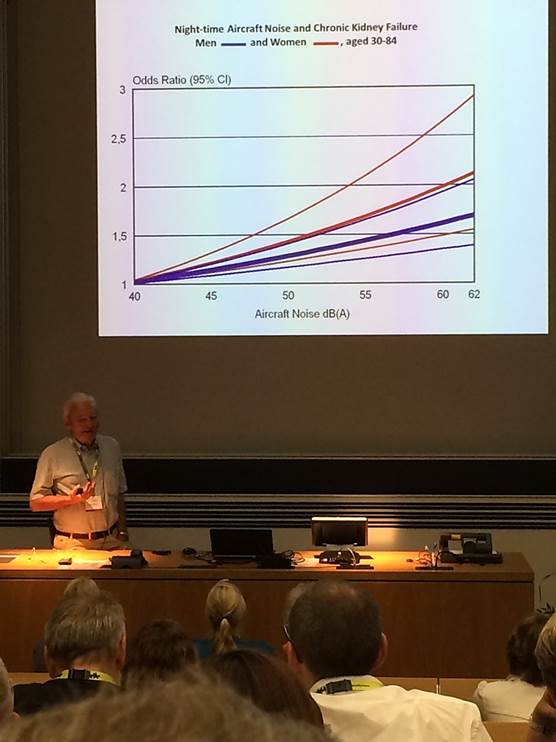
Eberhard Greiser explains it quite simple. In all the research he has been through regarding hearing loss men always suffer the most. This means that women are more affected by noise in general because they simply hear better than men! He concludes that in all diseases investigated (except stroke) women have a higher risk of getting noise induced illnesses than men.
The general conclusions of his study also included knowledge about how development of dementia seemed to be directly related to exposure of even low sound pressure levels of nocturnal aircraft noise.
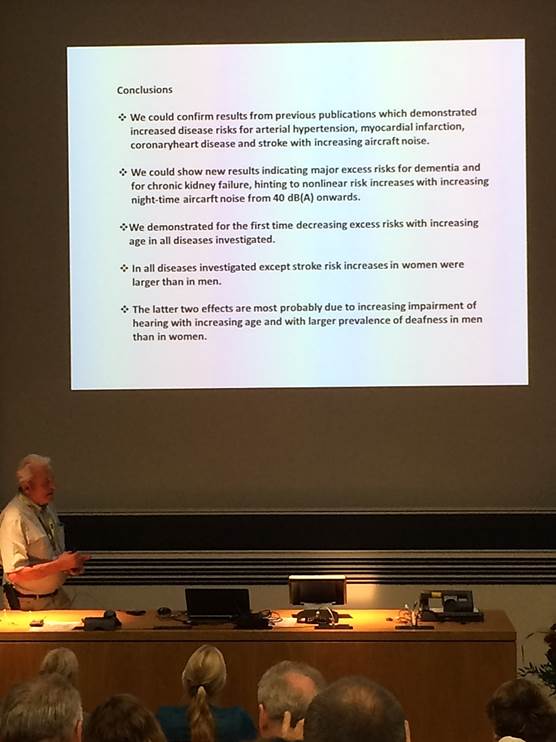
One of my favorite presenters, Nigel Oseland, went one step further with his presentation about ‘Psychological Factors Affecting Noise Distraction in the Workplace’. The presentation discussed the hypothesis from a literature review done by Nigel Oseland and Paige Hodsman – which main objective was to test whether personality types affect noise perception and distraction.
With passion and enthusiasm he invited the audience into the world of psychoacoustics where the difference between men and women are a too narrow parameter and he lectured about how personality profiles are affected differently by sound and noise – and that what can be a bad workplace sound environment for one – can be beneficial for another. He presented the Big Five Inventory (BFI), also known as the OCEAN that determines the strength of five personality factors: Openness, Conscientiousness, Extroversion, Agreeableness and Neuroticism.
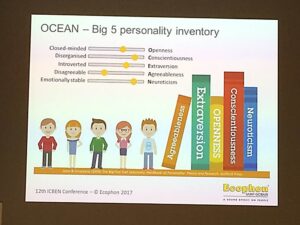
Nigel discussed the paradox that a lot of companies today use a lot of money in utilizing personality profile tools in the recruitment process – and then don’t think about it in regards to how one reacts to sound and where to place people physically.
This psychoacoustic approach could be implemented not only in offices but in all working environments – and I believe that performance in general would benefit from it. The fact that introverts need a calmer working environment than extroverts when solving a complex task could be great to take into consideration when designing working environments. Nigel’s solution and conclusion in regards to sound in the workplace was really clear: D.A.R.E – Displace – Avoid – Reduce – Educate!
2. The world doesn’t just sound softer – ‘halfalogues’ are annoying!
‘The world doesn’t just sound softer’ – these were the words by one of the key note speakers, Stefan Launer, and he went through the world of hearing loss.
Hearing loss is among the largest chronic health problems in the world and the prevalence is 10-12% of the world population, strongly depended on age.
Stefan Launer held a really inspiring and heartfelt presentation about ‘Noise induced hearing loss and its impact on quality of life’ and his way of describing what hearing loss really is was:
‘The ear talks another language to the brain’
– meaning that it’s not only about restoring speech intelligibility in a worse way – it’s often about a blurred perception of reality and often normal feed-back to the ‘system’ is lacking and Stefan Launer explains that this is one of the reasons why there is a strong relation to falling and hearing loss (the person simply loses the subconscious sense of the feeling of the room).
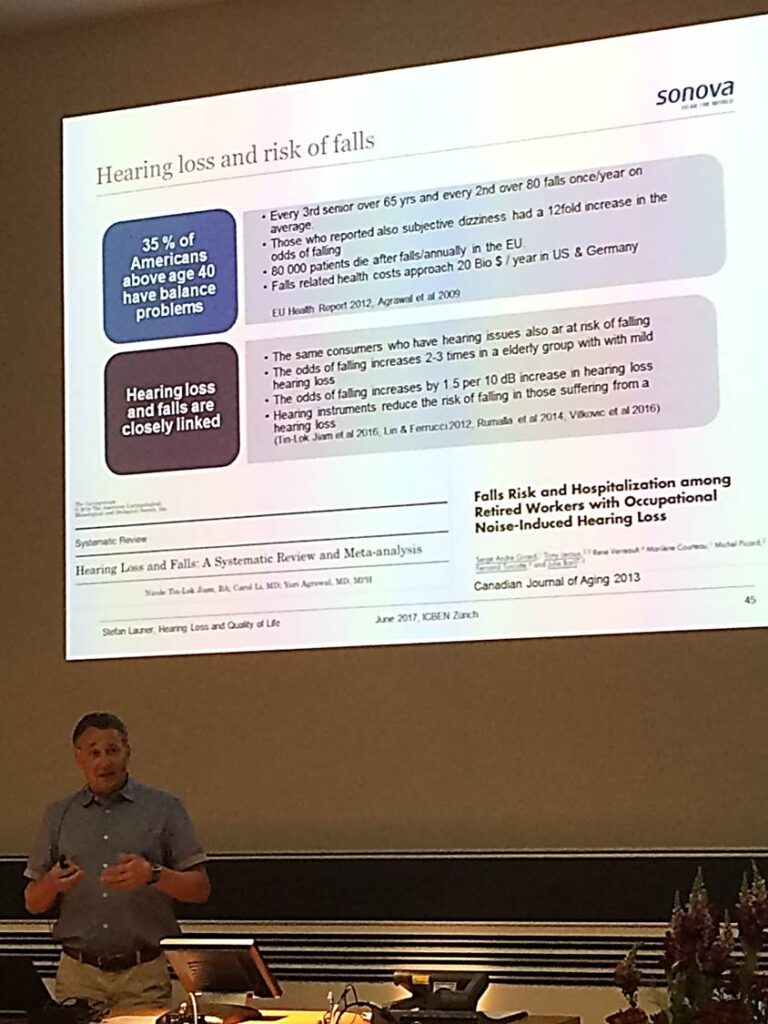
Communication – of course – is challenged by hearing loss and due to spectral resolution (not hearing the differences between e.g. consonants), loudness recruitment (the fact that hearing impaired people normally get more sensitive and have a ‘compressed’ audible area) and localization error (where does the sound come from) the hearing impaired person will have trouble being social.
It can be exhausting to be in a multi speaker environment when language is not understood or if normal sound pressure levels feel like a loud chain saw – or if you cannot decode who is talking to whom – and it can lead to social isolation. And not only for the hearing impaired person – also for the family. Stefan Launer named this ‘the 3rd party disability’.
Hearing loss IS a challenge – not only for the people directly involved but also for society. ‘There is definitely an economic impact, Stefan states – but we still need more research on the impact of hearing loss on work life’.
In regards to work life and performance there is no doubt that sound and noise has an economic impact in general. One of the ‘lighter’ presentations (if you compare it to the presentations about severe health problems because of noise) was held by John Everett Marsh under the title ‘Why are background telephone conversations distracting’ and I found myself giggling during the presentation because it was so familiar to what I personally find distracting.
The acoustic unexpectedness when someone talks on the phone – and you don’t know when he or she is done OR when he takes over the conversation after some minutes of silence – that’s what triggers my inner ‘aaargh!’-reaction.
John was discussing that we simply also just WANT to listen when someone talks in the background and that these ‘halfalogues’ triggers our human curiosity and that it gets more distracting than overhearing a full conversation.
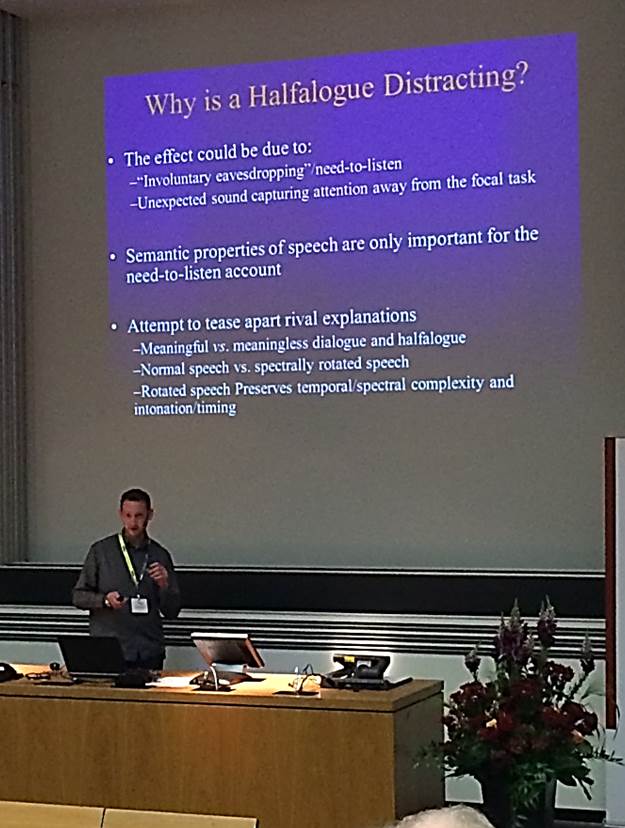
Staying in the field of distractions at work, Nils Rage, presented the ‘Sundbyberg Study’ which is a cross-over design field study. It is a unique room acoustic intervention study because it both contains acoustic measurements and subjective questionnaires. Briefly the study presents the effect of noise on occupants of an open plan office environment and how the correlation between the acoustic treatment and occupant-rated noise disturbance. The study investigates real conditions in two comparable floors and the acoustic interventions were assessed according to ISO 3382-3. The conclusions were clear: Improved acoustics led to lower stress.
It would be interesting to see the same study made with kids in a school setting. As mentioned in the WHO presentation it is hard to investigate how noise impacts children and their performance. Colin Campbell had especially one slide in his really great and inspiring presentation about ‘Effective open learning landscapes’ that in my perspective is all we need. One could ask the question – if drawing is so hard in a noisy environment – how would you perform if you had to solve a math test?
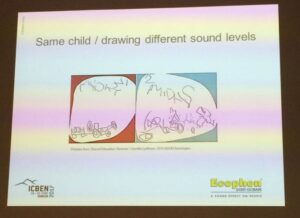
3. Healthy sound in reality – what is it after all?
WHO was represented by quite a few speakers and it was impressive to get a glance on all the work that lies behind the future updates of the environmental noise guidelines for the European Region.
The data is massive and the health outcomes reviewed and covered in the guidelines include annoyance, cardiovascular and metabolic effects, cognitive impairment, quality of life, mental health and well-being, hearing impairment and tinnitus, adverse birth outcomes, and effects on sleep (!). Dorota Jarosinska stated that the WHO guidelines are NOT standards or building codes but in my perspective the work and the structure behind them should really lead to more focus on these guidelines in general.
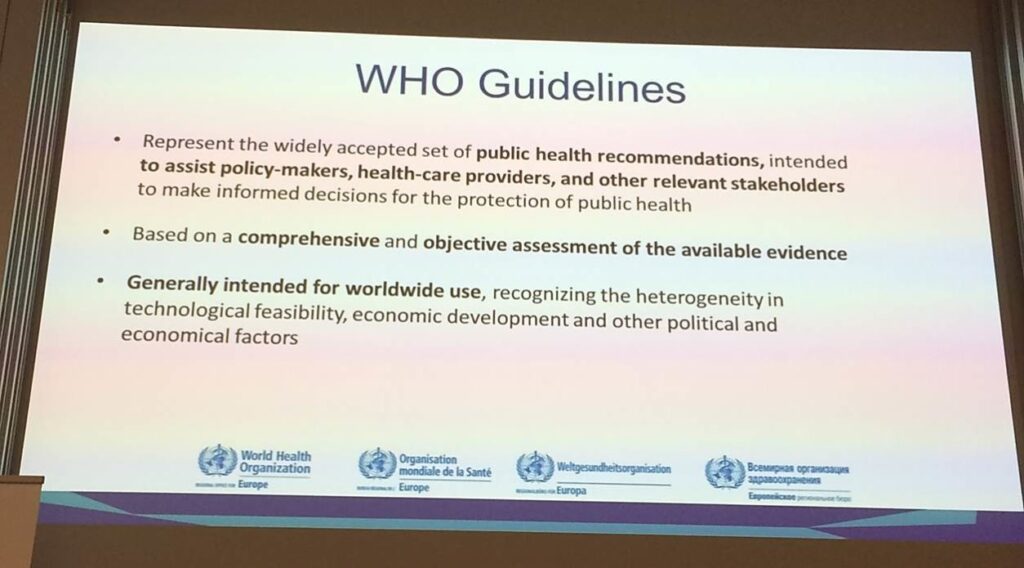
Dorota Jarosinska commented on one thing that is a challenge doing these guidelines and that is to investigate how children are affected by noise. It is so hard to map children’s competences in general and in regards to sound it is really complex. ‘More research needed’ seemed to be the conclusion – as it was in a lot of presentations.
Andreas Liebl held a presentation that also stated that ‘more research is needed’ – and especially real life situation research. His presentation titled ‘Review of research on the effect of noise on cognitive performance 2014-2017’ explained the process of going from a total of 1114 posts on the topic down to the 47 most relevant studies in regards to work-related performance.
Andreas Liebl discussed an insane amount of variables that have to been taken into consideration when doing research like this and he made it clear that real life settings should always be preferred.
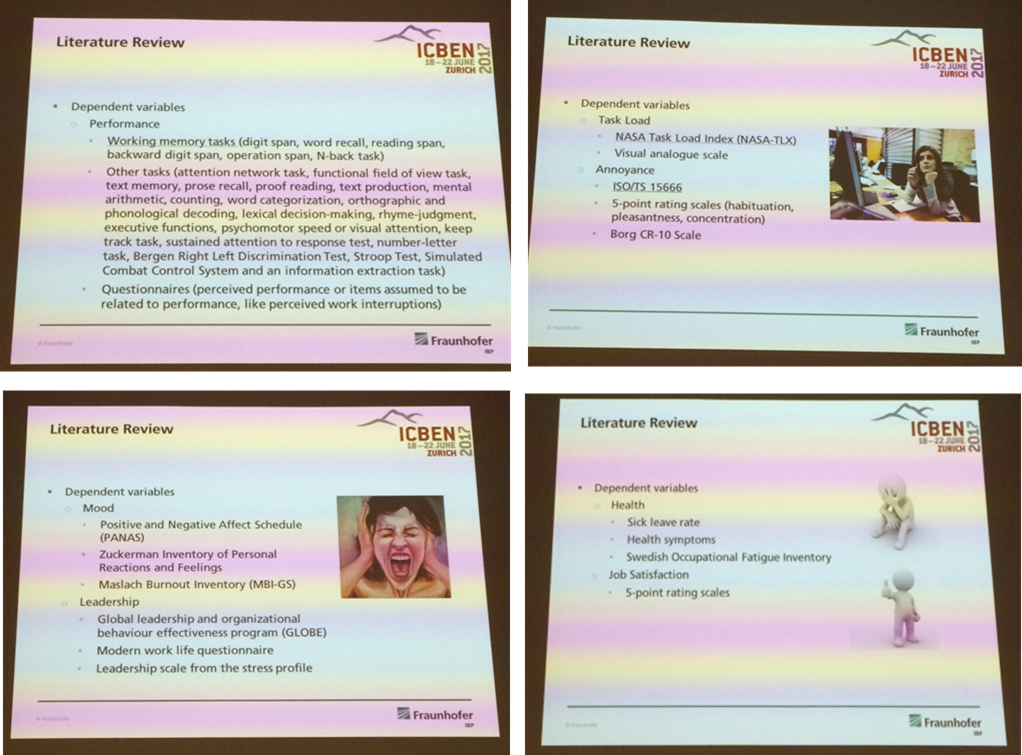
Real life settings and reality were very well presented in one of my favorite sessions ‘Effects of noise on cognition, performance and behavior’. Sandra Keller held an almost too ‘lively’ presentation about the ‘Impact of noise on communication and concentration during surgeries’ and her research was based on 109 long abdominal surgeries (which is the reason for my statement ‘almost too lively’ (!) – the pictures and the speaker’s performance made to feel your stomach). One of her major statements was:
‘The more noise – the worse the outcome for the patient’
– which is enough information about a study one would say!
She also discussed the difference between younger doctors and more experienced doctors – how they tend to communicate differently in regards to noise. The younger doctors – when the heat is on (!) communicate less than they normally do whereas the more experienced doctors don’t seem to change communication behavior no matter the situation.
Sandra Keller concluded an interesting thing about different cognitive workload for different type of staff during the surgery and that reported increase of concentration was different for surgeons, anesthetists and scrub nurses.
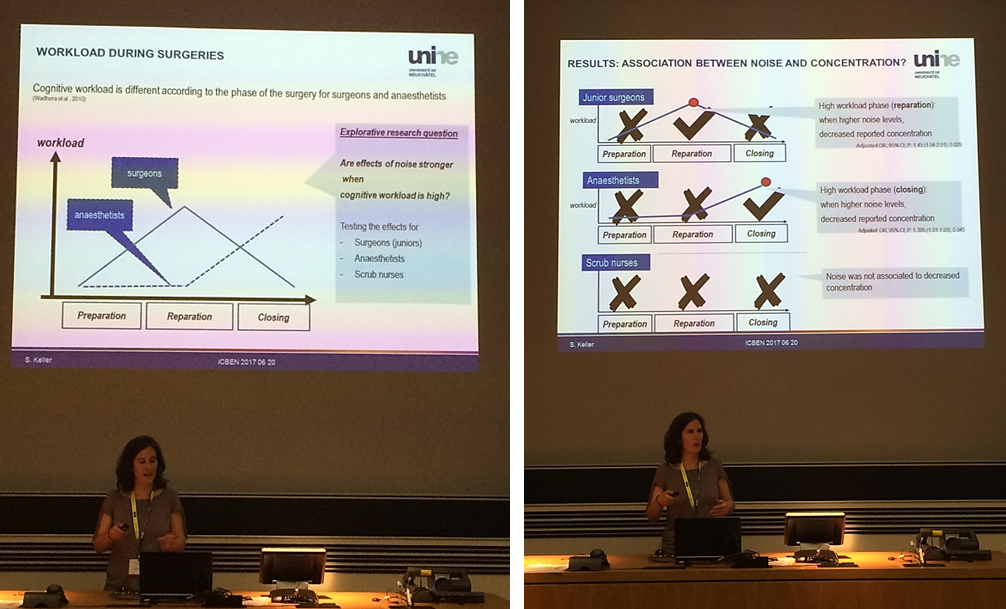
Nurses were also the focus in the following presentation by Maria Quinn – who before she took on the role as an acoustic expert was a nurse herself. In her presentation that included annoying sound files (to make the audience feel the stress that nurses feel when they communicate important information despite beeping and noise from medical equipment) she discussed the need for better acoustic standards and regulations in healthcare facilities.
The title of her paper was ‘How does staff perceive the sound environment in operation theatres and treatment rooms with the present standards and building regulations?’ – and it was based on a survey of 154 nurses in Sweden. Maria Quinn made it clear that all the nice pictures we often see of healthcare facilities don’t always reflect the reality and to demonstrate that she showed us a picture and asked: Can you find the two people here?
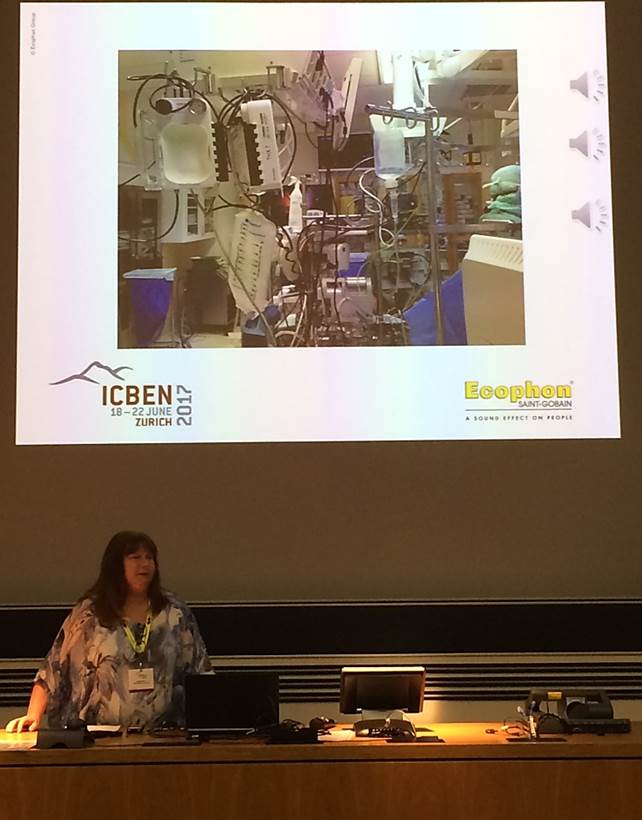
Maria’s conclusions were clear. We need to have better acoustic standards including more acoustic parameters (not only reverberation time as it is in many countries).
We also need to ask ourselves questions about the medical equipment – does it really have to be that loud, beep that many times, etc.
A hospital has a complex task to solve and the design is SO important – and in regards to sound always be careful when you choose the surfaces. Sound absorption should be prioritized and is crucial to both patients and staff.
Maria ended her presentation by respecting all the variables in a healthcare setting and after letting the audience know about the most important ones, she said:
The room acoustic design – that’s where we get in!
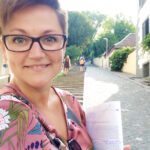
Besides my top 3 takeaways from the conference there were a lot of great presentations about low frequency noise and vibration, effects of noise on sleep, non-auditory health effects of noise and effects of noise on cognition, performance and behavior – and if I could attend the same conference again I would definitely attend this one.
The presentations – except the key notes – were 15 minutes and I feel bombarded with inspiration and knowledge – and I will definitely attend ICBEN 2020 in Stockholm!
Thank you to Zürich for being so beautiful, thank you to the organizers for making such a brilliant event – and thank you to all the speakers for making some noise! ICBEN definitely had a sound effect on me!
Follow Mai-Britt on Twitter Follow @decibel_dam
More on the conference: The hottest acoustic conference this year!

